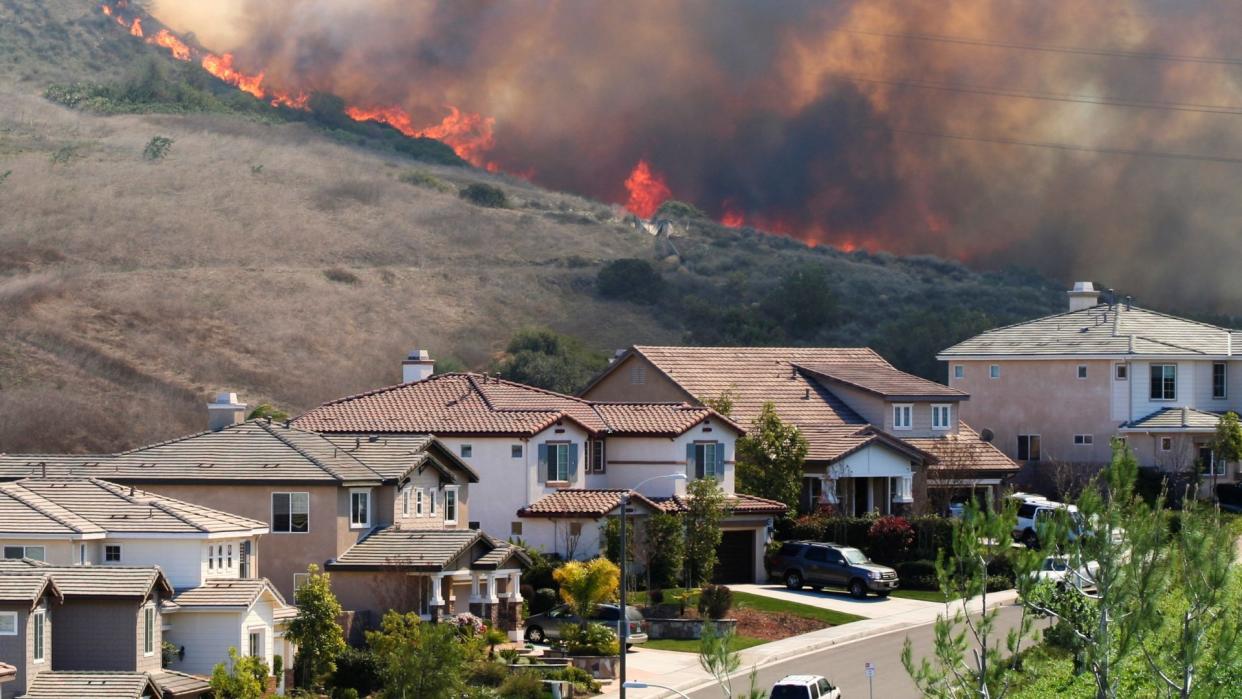1-in-6 Americans Live in a Wildfire Zone, Here’s How To Safeguard Your Financial Paperwork

Fire season in parts of the country prone to wildfires typically begins in late spring or early summer and peaks in August, when land and forests may be at their driest. But this year, fire season may come quickly and affect parts of the country not typically afflicted by wildfires, multiple reports say.
See: Stimulus Updates To Know for Spring 2022
Read More: 8 Items Around Your Home That May Be Worth More Than You Think
For instance, officials in Oregon say fire season could come on very suddenly. “While the recent spring weather has been very beneficial in delaying the onset of this fire season when those conditions do change, the underlying drought conditions will quickly overtake – and that transition from non-fire season into fire season will likely come very quickly this year,” Mike Shaw, fire protection division chief for the Oregon Department of Forestry, told local CBS affiliate KCBY.
A recent model built by the nonprofit First Street Foundation and analyzed by the Washington Post found that 16% of the U.S. population, spanning more than 80 million properties, live in areas at risk of wildfires. Nearly half of those hazardous areas are in the South. The new Fire Factor model lets people view data for their addresses to assess their risk of fires and floods.
But whatever the data models forecast, it’s important to stay prepared for natural disasters, including fires and hurricanes. That includes protecting your financial paperwork so you can access it in an emergency. If your home is destroyed by fire or flood, it will be especially crucial to access paperwork such as:
Your homeowners insurance or renter’s insurance documents
A home inventory detailing items of value, including photos and receipts if available
Home appraisals
Tax records and tax returns
Records of home improvements
Health records of residents
Vehicle titles or lease paperwork
Life insurance policies
Car insurance policies
Health insurance paperwork and cards
When you’re protecting and storing your documents, think about storing both hard copies and digital copies. Here are some options for securing both types of files.
POLL: Have You Skipped Any of These Essential Expenses Due to Rising Prices?
How To Store Hard Copies of Documents Safely
You can – and should – store hard copies of your important documents in a fireproof, waterproof safe. Depending on the size, you can find affordable options on Amazon, or at stores like Staples, Walmart and Target.
A small storage box of 0.17 cubic feet goes for under $50 on Amazon. Staples carries a convenient 16-inch wide by 12.6-inch deep and 6.6-inch tall Honeywell waterproof and fireproof large enough to store a stack of papers for $67.99. Of course, you can purchase a bigger safe to also protect other valuables if that works better for your family.
How To Store Digital Files
Experts in the data recovery field often assert that having one back-up is like having no back-ups, and two back-ups is like having one. Experts recommend keeping three separate copies of your important files. The data storage folks at Nakivo quote the “3-2-1” backup rule, writing that you should have three copies of your data, including two on different storage media, with at least one stored off-site.
In today’s digital world when cloud storage is relatively cheap and easily available, you can easily choose a cloud-based service like Carbonite or Dropbox to store digital copies of your important papers. Just scan them in and save them as PDFs.
You might also keep copies on your home computer for easy access. You can also store the files on a USB drive and place it in your waterproof and fireproof safe or give it to a family member or neighbor you trust for safekeeping in the event of an emergency.
Similarly, you may want to keep a file of phone numbers and websites for all your insurance providers and other crucial services. That way, if the unimaginable occurs and you lose all your backups as well as hard copies, you can access your information through your provider.
How To Retrieve Lost Records After a Natural Disaster
You should be able to retrieve any documents you need, including homeowners insurance policies, from your provider in the event of a natural disaster. If you hire a home inventory service, they typically provide a printed and digital record of your home inventory. They may provide your homeowners or renter’s insurance company with an inventory of your home’s items lost or damaged in a fire or flood.
If you need to access copies of your tax documents for any reason after a natural disaster, you can get transcripts through the Get Transcript tool at IRS.gov. You can also use the IRS2Go mobile app or call 800-908-9946.
You can get copies of past year’s transcripts or tax returns for free using IRS Form 4506-T or Form 4506, respectively. The IRS website instructs taxpayers to write the disaster designation on the top of the form. For instance, you might right “Colorado Wildfires” or the name of a specific hurricane or flood in your region.
See: 10 Costco Brand Items With the Best Bargains in May
More: 11 Best Prepared-Food Deals at Costco
Being prepared can save you time and headaches during a stressful experience if your home is struck by wildfires, flooding, or a hurricane or tornado.
More From GOBankingRates
This article originally appeared on GOBankingRates.com: 1-in-6 Americans Live in a Wildfire Zone, Here’s How To Safeguard Your Financial Paperwork

 Yahoo Movies
Yahoo Movies 
